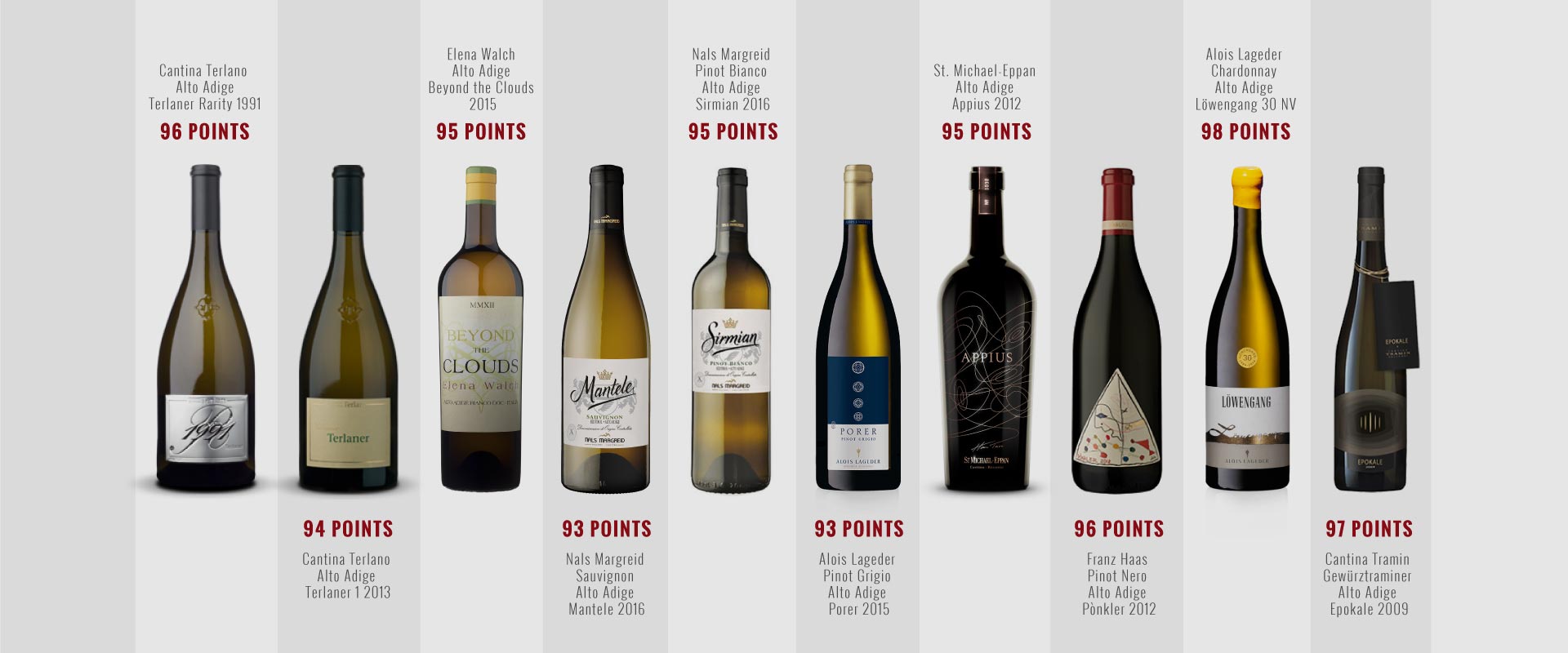
I can’t imagine producing a documentary with a Hollywood director is ever easy. However, when your film set is the top of a rugged cliff, and your job is making sure James Orr gets from one side of the valley to the next on time — and safely through a series of suspension bridges and cavernous mountain passes — being the production manager takes on a whole new meaning!
Even so, while working for much of last summer in Alto Adige with the celebrated filmmaker on “The Miracle of Alto Adige,” it was his approach towards familiar winemaking topics that took the most getting used to.
James is a storyteller. Known more for his work on “Three Men and a Baby” and “Mr. Destiny” than his penchant for wine, he was intent on discovering the personal stories behind each and every bottle. He was less interested, as I often am, in viticultural minutiae, but rather what inspires these German-speaking Italians to make wine in one of the most extreme regions on earth.
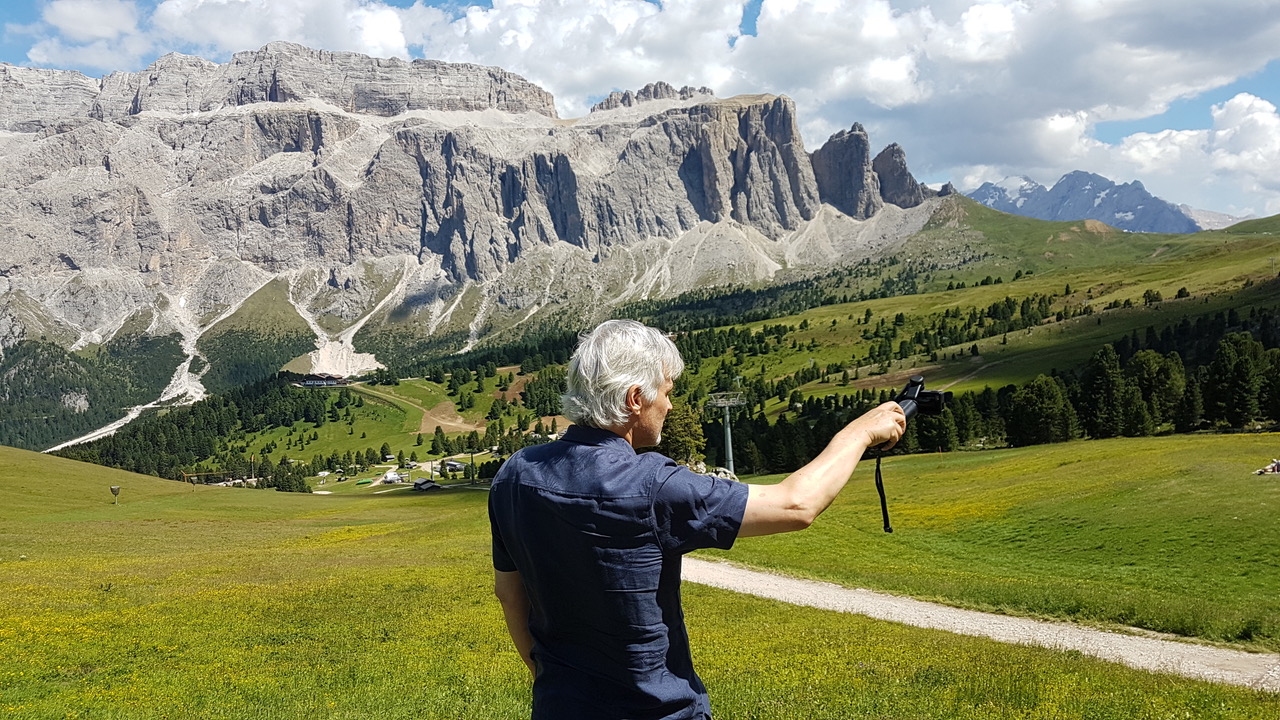
The JamesSuckling.com team scaled a 2100-meter mountain to capture the best shots for the documentary.
Farmed by the intrepid and passionate altoatesini, the towering, lusciously green mountains and precipitous mountain terroirs are enough to stoke anyone’s sense of awe when captured on film. I think James did a fabulous job bringing it all to life.
Anyhow, getting back to the more earthly realm of scores and notes, we thought that it was about time to share some background and our top picks for wines made by producers in the movie.
Alto Adige’s wines are unique and characterized by a trademark purity of fruit and energy. In fact, I remember drawing a comparison to the region while writing a note for a Chilean chardonnay just the other day. It shows how the region is now truly a benchmark for white wines, especially those made in relatively warmer climates.
Despite similarities, a “house style” or specialty becomes more evident as you get to know each of the individual producers. The wines are a product of the twists and turns of this Y-shaped valley and the myriad of different exposures and soil types it has to offer.
Franz Haas
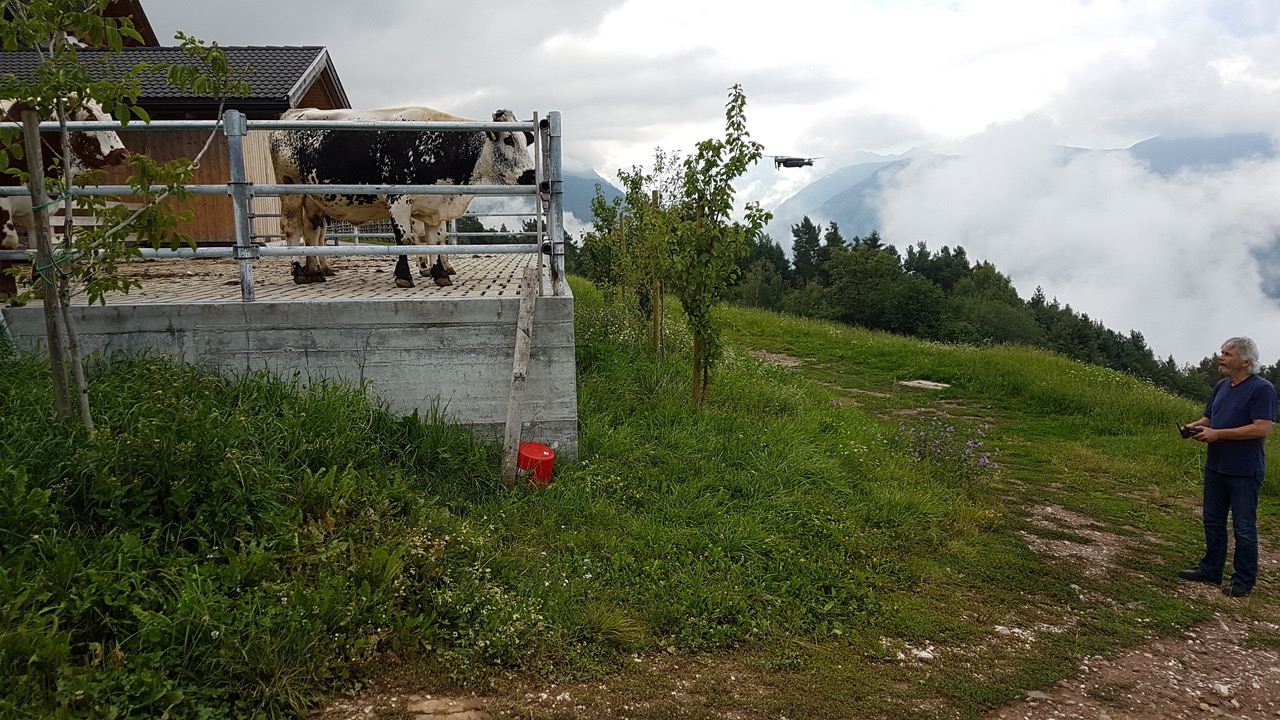
Over at Franz Haas, the cow neighbors had a particular interest in drones!
Pinot noir or nero, for instance, has tended to fare better on the southwest-facing, lower slopes in Northeastern Italy. And yet, even though Franz Haas’ vineyards are planted on the east of the Adige, he bucks the trend, having planted vines at 750m for his latest project named Pònkler. That’s not quite the dizzying heights of the cloud-covered pinot paradise seen in the movie, which stands at 1150m (used, for now, only for sparkling wine), but it’s not far off.
The whiskered, bespectacled Burgundophile was pushed to cultivate cooler, higher-altitude sites by the growing threat of global warming. “Pinot nero is my wine,” Franz Haas admits in the documentary. “It’s the wine that keeps me up at night, it’s the wine that gives me joy and it’s the wine that makes me cry.” The 2012 Pònkler (96 points), which is the inaugural vintage, is the best pinot noir in Italy out there right now, proving at least some of his sweat and tears aren’t in vain!
Nals Margreid
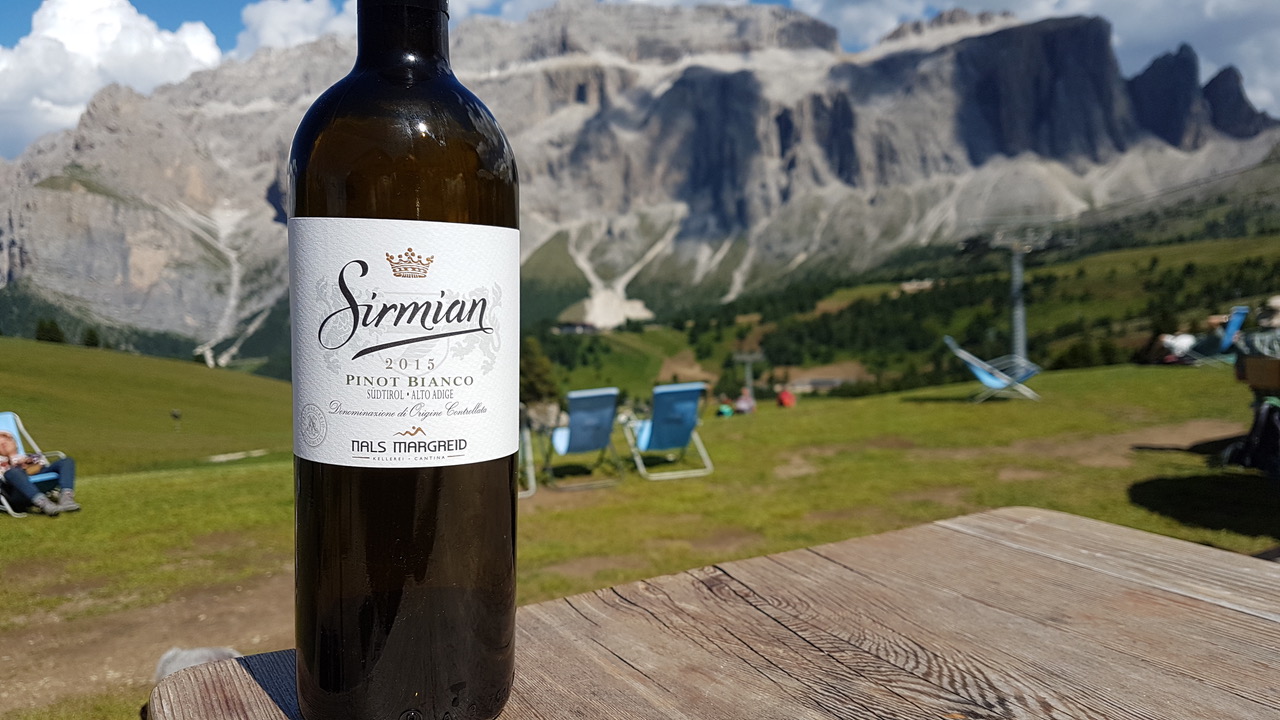
Nals Margreid’s Sirmian shows plenty of energy and focus, as well as a mineral, salt and slate character.
Another real character in the Alto Adige wine scene is Gottfried Pollinger of Nals Margreid. His tenacious, colorful personality has helped lift this cooperative of two villages — Nals and Margreid — out of relative obscurity. I sometimes joke with Gottfried that he’s the only employee at the winery, as he seems to do everything from winemaking to local politics to promoting his wines across Asia!
Nals Margreid’s whites are among the best in Italy and certainly the best value. The single-vineyard bottlings take the prize though, particularly the Sirmian (95 points for the vintage 2016). It’s an old block of pinot bianco rising sharply above the winery and it produces the purest, most mineral expression of the variety anywhere in Italy.
We’ve also included the Sauvignon Mantele 2016 in our selection, as it’s a great example of what the grape can do in Italy — with riper flavors but a delicious streak of refreshing acidity. Mantele is located on the hotter valley floor within the village of Nals and is partly owned by Gottfried’s brother.
Elena Walch
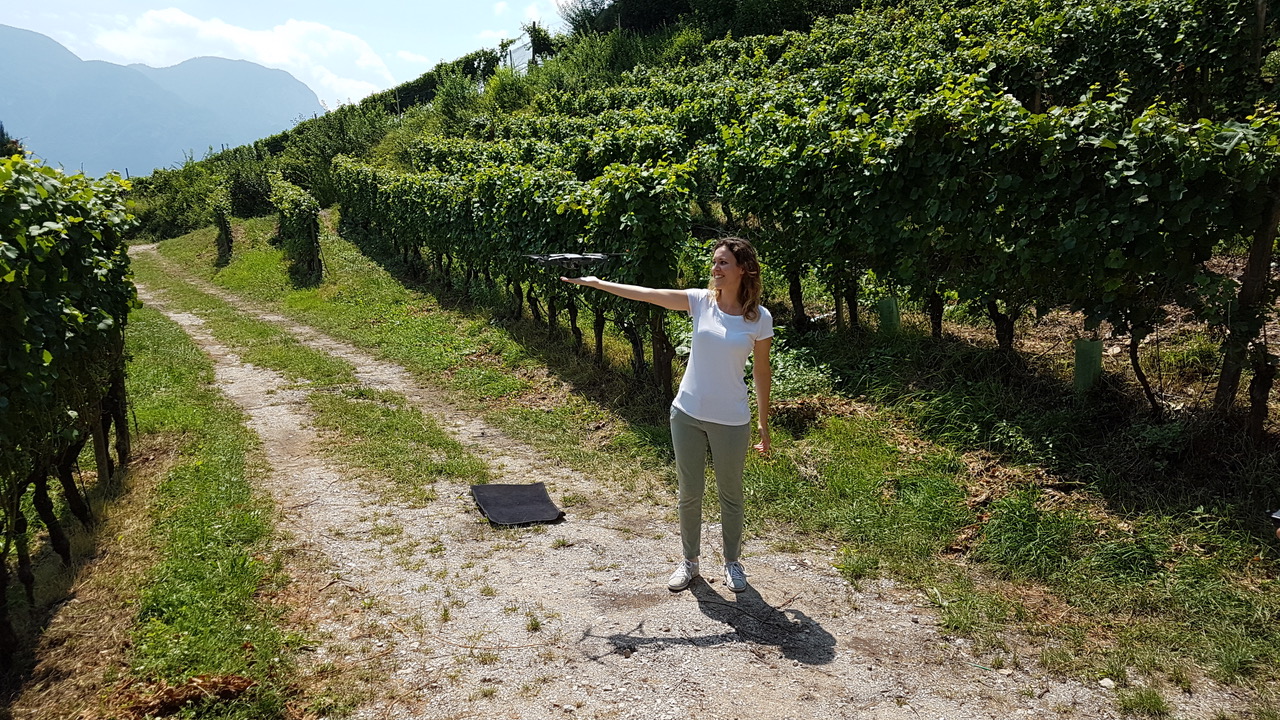
Julia Walch getting up close with JamesSuckling.com’s drone in her Kastelaz vineyard.
One of the stars of the movie is Elena Walch, the only serious female grower in Alto Adige. In the ‘80s, she had the audacity to spearhead modern viticultural practices such as green harvesting in an often-archaic world dominated by men. Today, her daughters lead the charge and a few years ago, they built a brand-new winery complete with a train track to deliver grapes to the gravity-fed stainless-steel fermenters.
The wine we’ve chosen to feature from Elena Walch is something of a mystery since its exact blend is a trade secret. Beyond the Clouds (95 points for the 2015 vintage) is ostensibly composed mostly of chardonnay from Castel Ringberg, the family’s fully restored Renaissance castle whose namesake vineyards benefit from the cooling breezes of the nearby Caldaro lake.
However, given Beyond the Clouds’ exotic aromatics and weighty body, there has to be a touch of sauvignon or kerner and certainly some gewurztraminer. And I suspect the latter comes from Vigna Kastelaz in Tramin, which is the sprawling single vineyard you see right at the end of the documentary that’s divided by just a few stony terraces and the odd cypress tree. It’s one of the hottest crus in South Tyrol as it looks down the valley, southwards, rather than across it.
Cantina Tramin
The jury is still out on the exact origin of gewurtraminer with its pink berries. Most likely, its green-colored parent grape traminer is the one named after the village of Tramin or Termeno. Still, some of the best wines in the world are being made in this area from the more popular, younger mutation, and none best Epokale as made by Cantina Tramin.
Cantina Tramin might sound like another unspectacular local cooperative. But when you catch a glimpse of the futuristic, green cellar on the horizon, its rows of webbed, tinted windows suggest otherwise. A sci-fi fanfare even chimes in at that very point in the documentary.
If that isn’t quite enough to transport you from a James Orr to a James Cameron movie, the story behind Epokale could, perhaps. This mighty, sweet gewurtz with its oily frame (97 points) is matured for seven years in a mine, 4km underground and at over 2000m in altitude. It’s hard to imagine a better aging environment as the temperature within these snowy peaks remains constant all year round at 11 degrees Celsius and with 90 percent natural humidity.
Cantina Terlan
Indeed, James and I have long believed that Alto Adige houses the best wine cooperatives on earth. Here, somehow, these arcane associations of growers flourish. Each year, hundreds of members hand over their grapes to the winery, and the winery not only returns cash but also grants part ownership and a small say in the running of the business — plus a healthy supply of the finished product, I should imagine!
And it works. Just look at Cantina Terlan, probably the archetype for the region. Their vignerons or vignaioli assiduously tend to magnificent pinot bianco plots high up on the northeastern side of the valley. Many vines are still trained to the pergola system atop purple-red volcanic soils called porphyry.
Then the magic happens in the cellar. Terlan’s best wines are blended whites, which usually include pinot bianco, chardonnay and sauvignon. The highest-quality berries are carefully selected before the creme de la creme undergo aging that can last for up to four decades. The wine highlighted here, the Terlaner Rarity 1991 (96 points), is perhaps the only of its kind in the world, as it is left to rest 24 years on its lees in a spherical, stainless steel tank.
After clambering up a makeshift ladder in the movie to inspect the 1979 version, I managed to ask the winemaker Rudi Kofler off-camera when the wine might be bottled. “Not before I die,” he replied, broodingly.
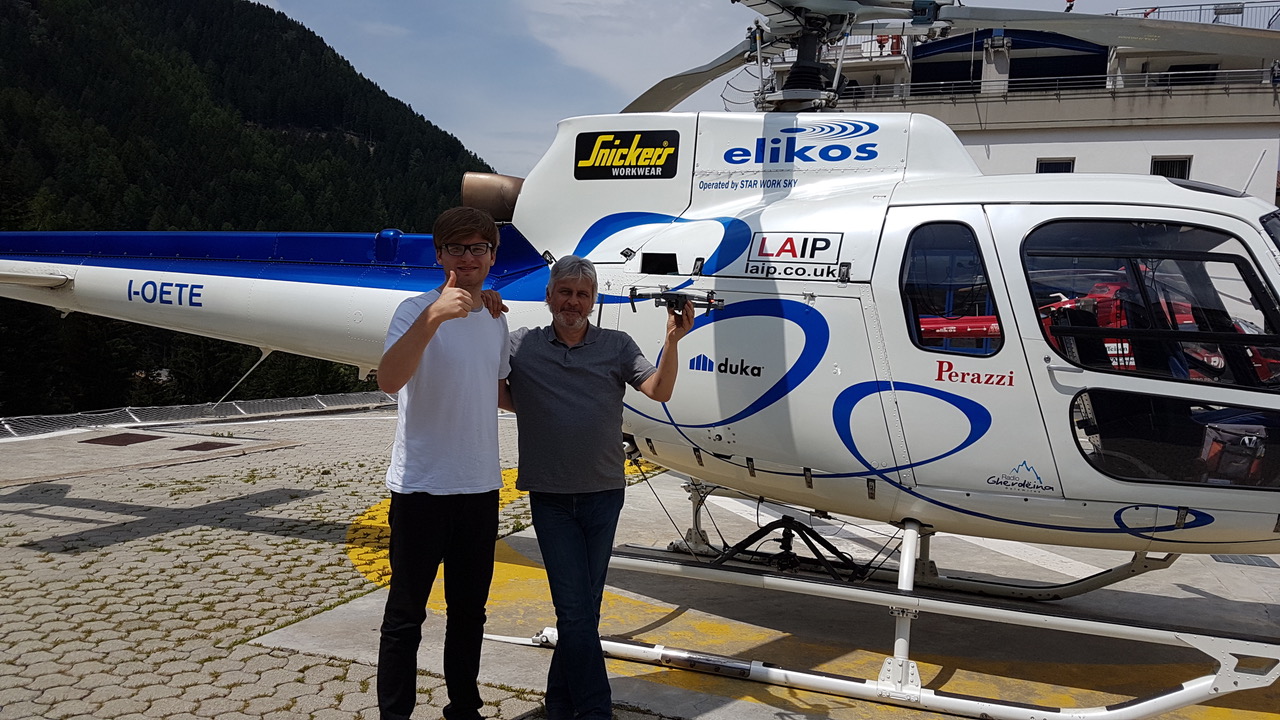
Jack Suckling and James Orr take to the skies to shoot opening footage of the documentary.
Alois Lageder
Of all the innovators in this miraculous landscape, none have left as much an impression as Alois Lageder. The pioneering yet soft-spoken viticulturist first started exploring biodynamics in the ‘90s, around the same time the late Robert Mondavi paid him a visit and inspired him to take the region’s wines to the next level. Lageder feels that expanding the diversity of this alpine ecosystem is necessary in the fight against climate change, while also adding to the complexity of each bottle.
His son Clemens, now at the helm of the family estate, is equally passionate about this cause. The latest experiments underway are explored in the new Cometa or Comet range: one label is a tribute to the nearly extinct Blatterle grape, another is a wine that ferments for two years (!), while another still is a blend of more than 100 distinct grape varieties.
The wine we had to recommend here though — if you can get your hands on it, that is — is the 30 years Lowengang. Lowengang is the top chardonnay from Lageder, harvested from a warm vineyard in Magré not far from the cellars; it’s quite underrated as far as we’re concerned. I had the 1994 just the other day and its Meursault-like aged character was quite a surprise, given that most wines from my birth year are, unfortunately, very poor! This 98-pointer is a non-vintage special release and a blend of 2013, 2014 and 2015.
Every entry in this top-ten list of wines from the movie is, in its own way, awe-inspiring. These are wines that personify the “Miracle of Alto Adige.” Buy a bottle or two and see for yourself! — Contributing Editor Jack Suckling

